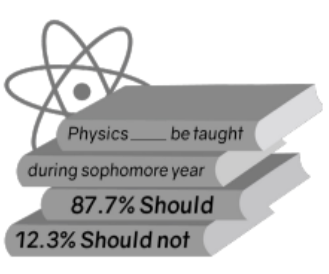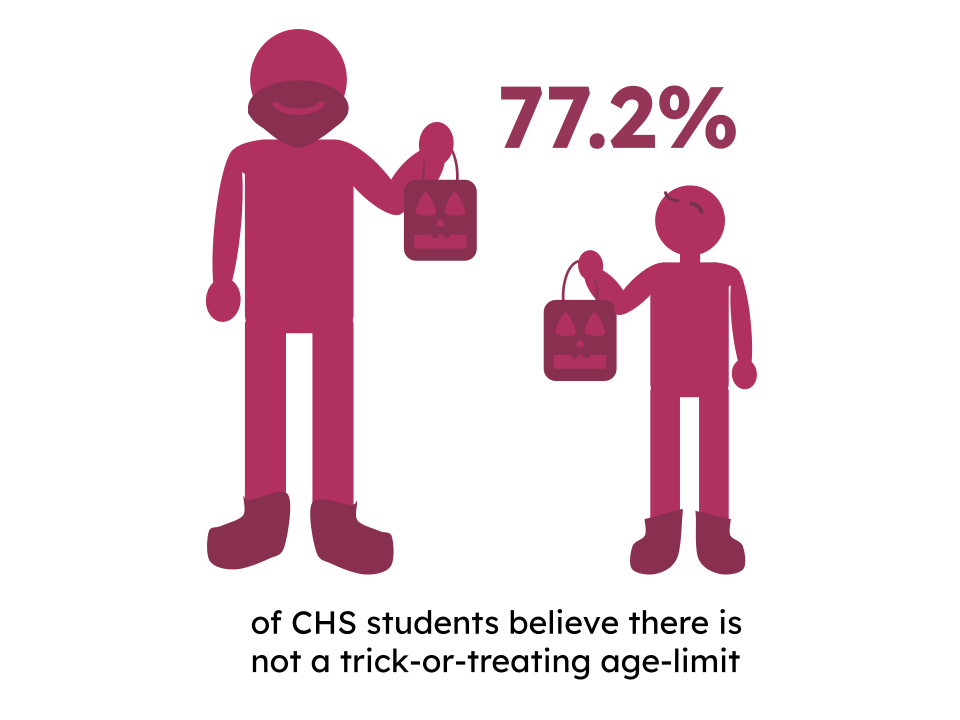
“Calculate the deflective force on a charge made up of 7.654 x 1012 electrons attached to a microscopic spring with a k of 8.96 and compressed 7.9 meters within a magnetic field of 3.025 Teslas, assuming the velocity is at a 67.8 degree angle with the field.” Did you understand that? Well, neither did the majority of sophomores currently struggling their way through the Physics I course that, at nearly any other school, they wouldn’t need to take for another year.
Commonly deemed the most difficult required course at CHS, physics has been the bane of sophomores’ GPAs since the school first opened. The combination of abstruse concepts and challenging math problems has made the class infamous for tanking grades and destroying spirits.
Typically, junior year chemistry would be swapped with physics. However, this is not the case for CHS, which has proven to be frustrating for many sophomores, including Ryann McArthur of Farmingdale. McArthur expressed that the class’s placement in the curriculum is unfair to students in non-advanced math courses.
“I only had geometry right before physics, so I didn’t have that extra knowledge that everyone else did,” McArthur said.“It’s especially bad because physics is a lot of Algebra II.”
While McArthur raises a valid point, all necessary skills to solve physics problems are taught in Algebra I, the lowest math course a physics student could have taken going into the class. While those who placed higher in mathematics have an inherent advantage, each student is technically given a chance to succeed.
Principal James Gleason clarified why this decision was made, clarifying that such a high math level isn’t necessary to take the course. It’s undeniable that physics is a very difficult class, but lacking background from Algebra II doesn’t make it impossible to succeed in the course.
“We’ve always had it in the sophomore curriculum,” Gleason said. “It should be a concept-based physics, which doesn’t necessarily lend itself to higher-level math introduction.”
Furthermore, many students agree that any drawbacks of sophomore year physics are far outweighed by the negatives of a potential junior year physics class. Sophomore Diana Xiao of Marlboro believes that 11th grade would be too stressful if physics was tacked onto it.
“In junior year, there’s a lot of work, especially with preparing for the SAT and applying to colleges,” Xiao said. “With physics, it might just be too much.”
Junior year is widely regarded as the most stressful year of high school, so it makes sense to eschew the addition of such a difficult course during this time. Physics teacher Steve Godkin is in support of his course being taught to sophomores rather than juniors, and even has his own theories for why CHS teaches physics that year.
“Strategically, it helps to keep the junior year GPA up, not to have my physics class,” Godkin said. “What I hear from guidance counselors is that the junior year GPA is the most important in applying for colleges. Plus, it does allow me to teach it at a somewhat lower math level — because, let’s face it. It’s already a hard class.”
If you were curious, the answer to the question at the beginning of the article is 30758.6 Newtons.








